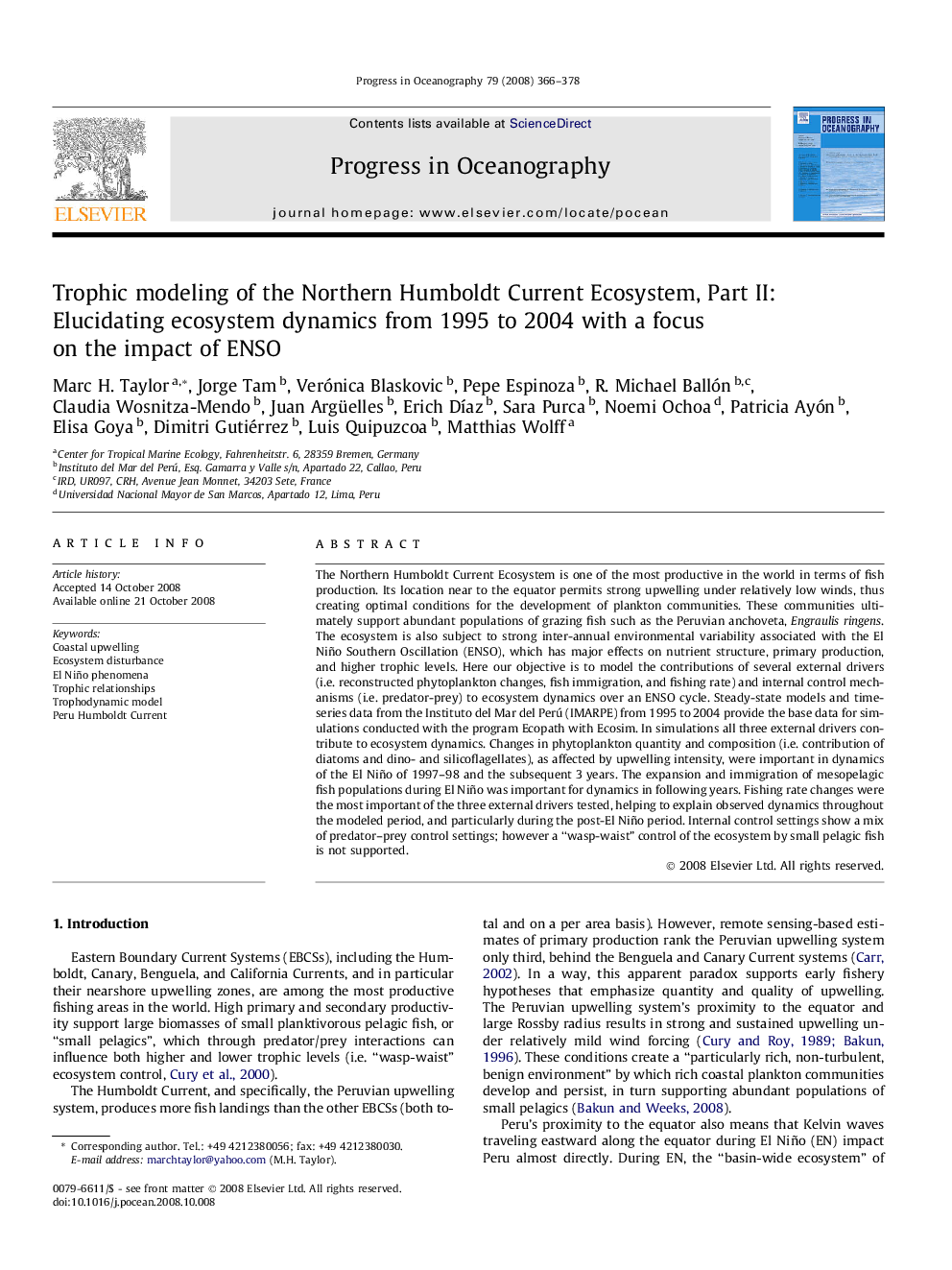| کد مقاله | کد نشریه | سال انتشار | مقاله انگلیسی | نسخه تمام متن |
|---|---|---|---|---|
| 4553647 | 1627969 | 2008 | 13 صفحه PDF | دانلود رایگان |

The Northern Humboldt Current Ecosystem is one of the most productive in the world in terms of fish production. Its location near to the equator permits strong upwelling under relatively low winds, thus creating optimal conditions for the development of plankton communities. These communities ultimately support abundant populations of grazing fish such as the Peruvian anchoveta, Engraulis ringens. The ecosystem is also subject to strong inter-annual environmental variability associated with the El Niño Southern Oscillation (ENSO), which has major effects on nutrient structure, primary production, and higher trophic levels. Here our objective is to model the contributions of several external drivers (i.e. reconstructed phytoplankton changes, fish immigration, and fishing rate) and internal control mechanisms (i.e. predator-prey) to ecosystem dynamics over an ENSO cycle. Steady-state models and time-series data from the Instituto del Mar del Perú (IMARPE) from 1995 to 2004 provide the base data for simulations conducted with the program Ecopath with Ecosim. In simulations all three external drivers contribute to ecosystem dynamics. Changes in phytoplankton quantity and composition (i.e. contribution of diatoms and dino- and silicoflagellates), as affected by upwelling intensity, were important in dynamics of the El Niño of 1997–98 and the subsequent 3 years. The expansion and immigration of mesopelagic fish populations during El Niño was important for dynamics in following years. Fishing rate changes were the most important of the three external drivers tested, helping to explain observed dynamics throughout the modeled period, and particularly during the post-El Niño period. Internal control settings show a mix of predator–prey control settings; however a “wasp-waist” control of the ecosystem by small pelagic fish is not supported.
Journal: Progress in Oceanography - Volume 79, Issues 2–4, October–December 2008, Pages 366–378